Prevent Hot Tub Scale: Tips for a Pristine Spa Experience
March 29th, 2024
March 29th, 2024
A hot tub can be a slice of paradise, offering a sanctuary where stress melts away and relaxation takes over. However, nothing disrupts this serenity faster than scale buildup. This pesky layer of mineral deposits can transform your bubbling oasis into a gritty annoyance. You might have encountered it before—rough, white deposits along the waterline or stubborn spots on the jets. These blemishes not only mar the appearance but can also harm your hot tub's efficiency.
In my own backyard, the relentless battle against scale was a frequent chore until I unearthed some effective strategies. Discovering the delicate balance of water chemistry was pivotal. It's a bit like baking; too much of one ingredient can throw the whole recipe off. Regular testing and adjustment of pH and calcium hardness levels can work wonders in preventing scale formation.
Moreover, not all water is created equal. Those living in hard water areas know this all too well; the naturally high mineral content can accelerate scale buildup if not properly managed. Implementing a consistent maintenance routine, such as using pre-filters and adding sequestering agents, can significantly reduce these risks.
By understanding the root causes and adopting proactive measures, maintaining a scale-free hot tub becomes less of a chore and more of an easy habit. With the right approach, you can keep your hot tub pristine and ready for those long, relaxing soaks whenever you need them.
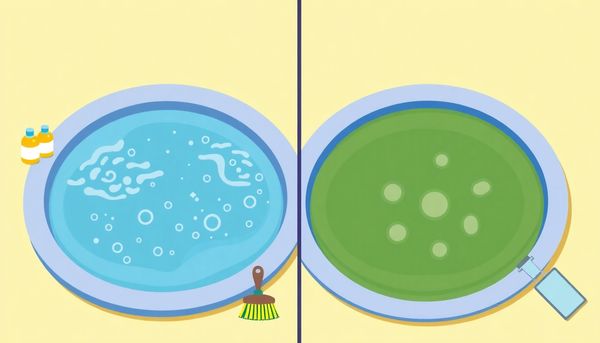
So no one wants to find themselves relaxing in a hot tub only to notice unsightly scale forming along the surface. Preventing this nuisance is simpler than it sounds. Begin by paying attention to the water you use. If your home is supplied with hard water, consider investing in a hose filter to tackle the problem right from the start. This simple tool helps reduce mineral content before it even enters your spa.
Next, focus on maintaining optimal water chemistry. Regularly check and adjust the pH and alkalinity levels—keeping them in balance is pivotal. Aim for a pH between 7.4 and 7.6 and total alkalinity levels between 80 and 120 parts per million. When these levels are off, calcium and other minerals are more likely to precipitate, resulting in scale formation.
A little proactive maintenance goes a long way. Incorporate a scale preventer into your routine care; this product binds with calcium ions, mitigating scale buildup before it becomes a problem. And don't forget your hot tub filter—it’s the unsung hero in your hot tub’s ecosystem. Clean it regularly to ensure it efficiently catches debris and contaminants.
Lastly, adhere to a schedule of draining and thoroughly cleaning your tub every few months. This deep clean not only prevents scale but also keeps other unwelcome guests like bacteria at bay. With these practices, you’ll be able to enjoy your bubbly oasis without the worry of scale taking hold.
Maintaining the right balance of water-alkalinity in your hot tub is like keeping the perfect harmony in a band—each element has to hit the right note. Alkalinity acts as the manager, ensuring the pH levels don’t go off track. When alkalinity levels are too high, they can lead to scaling, which nobody wants. Picture this: you’re about to enjoy a relaxing soak, only to find the spa looking like a science experiment gone wrong with unsightly mineral deposits everywhere.
To keep your hot tub in top condition, aim for a total alkalinity (TA) between 80 to 120 parts per million (ppm). This range helps to buffer the pH levels, ensuring they remain stable. If you’ve ever experienced pH levels that are too high, you know they can cause calcium deposits to form on the surfaces, leaving you to deal with scale build-up.
A simple kit can help you monitor these levels. But here’s a tip from personal experience—testing the water weekly makes it easier to catch any changes before they escalate. If your levels are off, use an alkalinity increaser or reducer accordingly. Also, pay attention to your hot tub’s temperature, as warmer water tends to increase pH levels, compounding the problem of scale.
Remember, controlling water-alkalinity not only keeps scale away but also prolongs the life of your hot tub’s components, saving you from costly repairs. So, fine-tune those water levels, and let the good times soak on!
When chatting about hot tub maintenance, filters might not be the first thing on your mind. Yet, these unsung heroes play a pivotal role in preventing pesky hot tub scale. Filters act as the first line of defense, capturing impurities before they settle and leave their mark on your hot tub’s surfaces and plumbing. A clean filter can significantly reduce the risk of scale buildup, ensuring the longevity and efficiency of your hot tub.
Every few weeks, it’s wise to give your filters the attention they deserve. Think about it: filters work tirelessly to trap oils, hair, and various dissolved solids that contribute to scale. Over time, they become loaded with debris and lose their effectiveness. By regularly rinsing them with a hose, you help maintain their ability to protect your hot tub. For a deeper clean, soak them in a solution specifically designed for filter cleaning. This will dissolve stubborn deposits and restore the filter’s efficiency.
From personal experience, neglecting this simple task once led to a clog in the plumbing of my hot tub. The fix was neither quick nor cheap. Now, I make it a routine to clean my filters every month, knowing that this small effort prevents major headaches down the road. So, dedicating a little time to your filters can save you from the unwelcome surprise of hot tub scale.
On a chilly evening, when you're eager to soak in your hot tub, the last thing you want is to discover unsightly scale clinging to its surfaces. Imagine a solution that not only prevents this nuisance but also enhances your soaking experience. Water-softening solutions are a game-changer for hot tub owners plagued by hard water issues. These products work diligently behind the scenes, targeting the calcium and magnesium ions responsible for scale buildup.
A friend of mine, an ardent spa enthusiast, swore by these solutions after battling persistent scale. Living in an area notorious for its hard water, he noticed a remarkable difference once he began using a water softener. The usual grit and rough deposits on the tub's surface were replaced by a smooth, inviting feel. By introducing a water softener, the mineral content in the water is significantly reduced, preventing future scale formation.
When considering water-softening options, you might opt for liquid additives specifically designed for hot tubs. They're easy to use—just pour in the recommended amount, and let the solution work its magic. Alternatively, you could install a water softener system for a more long-term approach. Either way, maintaining a scale-free environment means less time scrubbing and more time enjoying your hot tub’s soothing warmth. So, next time you prepare for a dip, consider adding a water-softening solution to your maintenance routine—it’s a small step for you, but a giant leap for your hot tub’s longevity.
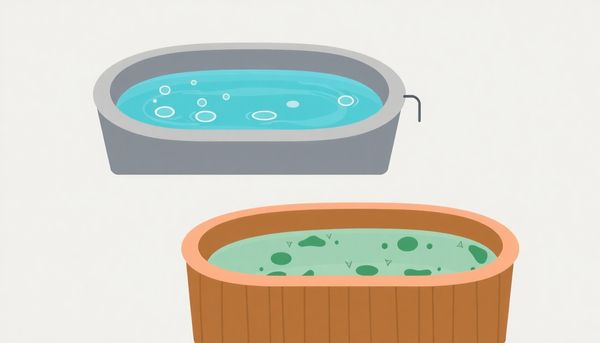
A quiet evening in the hot tub can quickly turn into a frustration session if mineral build-up rears its ugly head. Mineral deposits, often caused by hard water, can sneak up on unsuspecting spa owners, leaving behind unsightly scaling and potentially damaging your beloved retreat. Understanding how to combat this issue is essential to maintaining the longevity and enjoyment of your hot tub.
Begin by arming yourself with knowledge. Hard water, rich in calcium and magnesium, is a primary culprit of scale formation. If you reside in an area notorious for its hard water, consider installing a pre-filter on your hose when filling your tub. This simple addition can capture unwanted minerals before they even meet your spa.
Regularly test and adjust the chemical balance of your water, with special attention to pH and total alkalinity levels. Keep your pH between 7.4 and 7.6, and maintain alkalinity between 80 and 120 parts per million. Fluctuations in these levels can encourage mineral deposits, so staying vigilant is key.
Consider adding a sequestering agent to your water. This product binds to minerals, preventing them from settling on surfaces or clogging internal components. It’s a straightforward solution that complements regular maintenance practices.
Finally, don’t underestimate the power of routine cleaning. Wiping down your spa’s surfaces and performing quarterly drain-and-clean sessions can prevent scale from taking root. With consistent care and a proactive approach, you can enjoy your hot tub without the headache of mineral build-up.
Hot tub ownership brings with it the soothing promise of relaxation, but it also presents challenges like hard-water damage. Hard water, rich in minerals like calcium and magnesium, isn't just a nuisance with spots on glassware—it's a formidable foe for your spa. If unchallenged, these minerals will gleefully crust over your hot tub’s innards, transforming serene soaks into maintenance nightmares.
To preempt such calamity, consider the humble hose filter. It’s a small investment with a big payoff, filtering out many of those pesky minerals before they even touch your spa. I learned this lesson the hard way after a particularly stubborn bout of scaling left my jets sputtering like an asthmatic dragon. Since incorporating a hose filter, my hot tub has been blissfully scale-free.
Moreover, water chemistry holds the key to prevention. Regular testing and adjustments to your water's pH and alkalinity levels can keep future scaling at bay. Maintaining these levels within the recommended ranges prevents those sneaky minerals from crystallizing. For those wanting an extra layer of protection, a scale preventer can be your spa's best friend, subtly working in the background to keep mineral buildup in check.
Ultimately, vigilance is essential. Regularly inspecting the tub’s surface and plumbing for signs of scale can save you from more extensive interventions. By taking these proactive steps, your hot tub will remain a place of tranquility, free from the clutches of hard-water damage.
Battling the invisible foe of contaminant residue is the first step to ensuring your hot tub remains scale-free. Every time you slip into the warm embrace of your spa, you're unwittingly introducing a host of foreign agents: natural oils, hair, and even the remnants of your favorite body wash. While individually these might seem harmless, together they form a notorious alliance with the minerals present in your water, driving the creation of stubborn scale.
To begin the elimination, focus on meticulous cleaning habits. Regularly skimming the water surface and wiping down the tub’s edges can significantly reduce residue buildup. A friend of mine swears by a habit of using a microfiber cloth after each soak, ensuring oils and lotions don’t have a chance to settle. This small step can be a game-changer in the war against scale.
Moreover, invest in a reliable enzyme product designed for hot tubs. These wonder workers break down organic matter before they cling to your tub’s surfaces. Simply follow the manufacturer's instructions, and let the enzymes cut through the grime so you don’t have to. Remember, consistency is key—make it part of your routine, just like adding sanitizer or adjusting the pH. By addressing these contaminants head-on, you’re not just maintaining a pristine tub; you're laying the groundwork for a stress-free soak every time.
Amidst the bubbles and warmth of a relaxing spa session, the last thing you want is an unsightly surprise clinging to the edges. Maintaining optimal water balance isn't just about keeping your hot tub inviting; it’s essential for preventing stubborn scale buildup. It’s like keeping a good rhythm in music; every note counts.
Every hot tub owner knows the delicate dance of balancing pH and alkalinity. You want your water to be a welcoming environment, not a breeding ground for scale. A pH level between 7.4 and 7.6 is your sweet spot. Stepping outside this range can invite calcium deposits to settle in unwanted places. It's like baking a cake; too much of one ingredient can spoil the batch.
Do you remember the time your coffee machine broke because of mineral deposits? The same principle applies here. Hard water, rich in calcium and magnesium, needs careful handling. A hose filter is your frontline defense when refilling the tub, helping to sieve out these minerals before they have a chance to settle.
And don't forget the importance of regular testing. It’s the equivalent of checking the weather before heading out; you want to be prepared for any changes. Regular monitoring ensures you're always a step ahead, adjusting as needed to keep your spa experience smooth and scale-free. So, as you enjoy that serene soak, rest easy knowing your water balance efforts are keeping your tub in top shape.
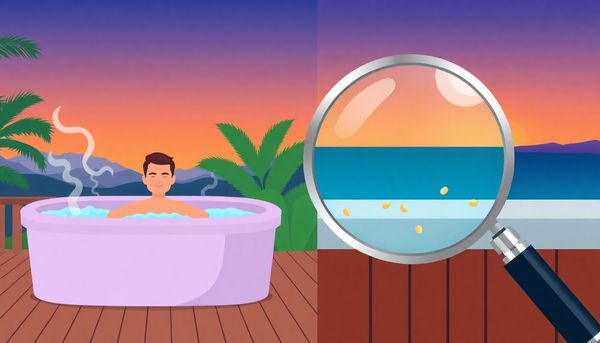
Maintaining the perfect water chemistry in your hot tub is akin to finding the sweet spot in a favorite recipe. The ingredients—pH, alkalinity, calcium hardness—must be just right to avoid the unsightly and damaging hot tub scale. When I first installed my hot tub, I learned the hard way that these factors need to be balanced meticulously. An imbalance can lead to mineral deposits that mar the appearance and function of your spa.
Start by testing the water with reliable strips or a digital tester. Keep the total alkalinity between 80 and 120 parts per million (ppm). This range acts as a buffer for pH levels, which should hover around 7.4 to 7.6. High pH results in increased calcium deposits, so if you notice the numbers creeping up, it's time for a correction. I once ignored a slight pH spike and ended up with a chalky residue on the hot tub walls—lesson learned.
If your local water supply is hard, using a water softener or hose filter during refills can prevent excess minerals from entering your spa. Consider adding a scale preventer product as a proactive measure; it's like having an insurance policy for your hot tub. By keeping a vigilant watch on your water chemistry, not only do you maintain a sparkling clean environment, but you also extend the life of your cherished bubbling oasis.
Minding a hot tub is like maintaining a delicate ecosystem, where every little element plays a part in keeping harmony. One significant aspect of this balance involves preventing mineral buildup, a sneaky adversary for any hot tub enthusiast. Mineral buildup, primarily caused by hard water, can turn your relaxing spa into a maintenance nightmare if left unchecked.
First things first, understanding your water source is crucial. If you're pulling from a supply rich in calcium and magnesium, you're dealing with hard water. Using a hose filter when filling your hot tub is a simple yet effective way to mitigate this problem. It acts as the first line of defense, stripping out excess minerals before they even hit the tub.
Next, regular water testing cannot be overstated. Keeping tabs on your water's pH and alkalinity levels is more than a routine chore—it's your spa's lifeline. Aim to maintain a pH between 7.4 and 7.6. Any deviation allows calcium to precipitate, leading to scale. Adjusting alkalinity first can provide a stable base for maintaining an optimal pH level.
Finally, don't underestimate the power of a good soak, for your filters, that is. Cleaning your hot tub filters regularly ensures that they're capturing all those pesky minerals and debris. Combine this with a quarterly complete drain and scrub of your tub, and you've got a recipe for pristine, scale-free waters. By staying proactive, you not only prolong your hot tub’s life but also enhance every soak with peace of mind.
Every hot tub owner has watched in dismay as pesky scale deposits begin to mar their pristine spa experience. The good news is that there’s a simple and efficient way to combat this: scale-preventing products. These unsung heroes work behind the scenes to keep your hot tub pristine, ensuring that the only thing you need to worry about is which bath bomb to use.
Take, for instance, the wide array of liquid scale inhibitors available in your local spa store. By directly adding these products to your water, you create a protective shield that binds with the minerals responsible for scale formation. This prevents them from latching onto your hot tub’s surfaces. Think of it as a silent guardian working tirelessly to keep your spa surfaces smooth and functional.
Now, you might recall the last time you replaced a filter; remember the satisfaction of fresh, clear water rushing back into the tub? That's the kind of cleanliness and clarity these products aim to maintain by preventing scale accumulation in the first place. They do this by disrupting mineral bonds before they can crystallize into scale, saving you from the hassle of frequent deep-cleaning sessions.
So, next time you're out grabbing supplies, throw in a scale-preventing product. It's a small investment to keep your hot tub luxurious, prolong its lifespan, and ensure that each soak is as good as the first. Embrace this simple addition to your hot tub maintenance routine, and say goodbye to stubborn scale for good.
Maintaining the right pH and alkalinity in your hot tub is akin to keeping a balanced diet for your body: crucial and often overlooked. When I first got my hot tub, I learned this lesson the hard way. One day, as I noticed a chalky buildup sneaking its way around the edge of my tub, I realized that neglecting water balance was inviting trouble in disguise.
To thwart scale formation, it's essential to maintain a total alkalinity (TA) between 80 and 120 parts per million (ppm). Alkalinity acts as a stabilizer for pH levels, ensuring they remain steady amidst temperature fluctuations. If alkalinity tips too low or too high, you’ll likely see pH levels mirror that imbalance, either leading to corrosive low pH or irritating high pH conditions. This, in turn, can encourage scale deposits, particularly if your water is already hard.
Aiming for a pH level between 7.4 and 7.6 is optimal for hot tubs. High pH not only fosters calcium buildup but also can cause discomfort for those enjoying a soak. Regular testing and adjustments, using pH increasers or decreasers as needed, help keep these levels in check. Ever since I started keeping a close eye on my hot tub's pH and alkalinity, not only has the water been crystal clear, but I’ve also sidestepped the need for rigorous scale removal sessions. It’s a small effort that pays off with a smooth-running spa experience.

The battle against hot tub scale isn’t just about treating the water; it's about tending to every nook and cranny of your spa, especially those pesky fixtures that often get overlooked. These are the very spots where mineral deposits love to settle in, turning your relaxing oasis into a breeding ground for unsightly buildup if left unchecked.
Begin by gathering the right tools: a soft brush or sponge, a quality hot tub scale remover, and a clean cloth. It's a straightforward process, but skipping any part could mean leaving scale behind to multiply. Start by ensuring the hot tub is powered down and completely drained. This not only makes the task easier but also prevents cleaning agents from contaminating the water you'll soon be soaking in.
With the tub empty, apply the scale remover to the affected areas, focusing especially on the jets and other metal parts. Use the brush to gently scrub the scale off. My neighbor once shared how a toothbrush worked wonders for those tricky spots — a simple yet effective tip! After scrubbing, wipe everything down thoroughly to remove any lingering residue.
While many focus exclusively on the chemical aspects of hot tub maintenance, remember that a regular scrub and clean can significantly extend the life of your spa’s fixtures. Consistency is key; a little effort now saves a lot of hassle later. With your fixtures gleaming and free from scale, you can return to enjoying your hot tub without worries of underlying damage.
Ever peered into a pristine hot tub only to be greeted by unsightly scale deposits? It’s a common nemesis for spa enthusiasts everywhere. Preventing water-related buildup isn’t just about keeping the aesthetics; it’s about ensuring your hot tub's longevity and efficiency. To keep scale at bay, start by managing water chemistry. Regularly test the water's pH and alkalinity, ensuring they stay within recommended levels. An imbalance can lead to mineral deposits, so adjusting these parameters is crucial.
Living in an area with hard water? Consider installing a hose filter when filling your tub. These filters reduce mineral content before the water even enters, cutting down on potential scale formation. While some may rely on chemical scale preventers, using a water softener can naturally minimize calcium and magnesium, the culprits behind that gritty buildup.
Incorporate regular maintenance into your routine. Keep your filters clean and change them as needed to catch any debris or oils before they contribute to scaling. A simple trick I've found effective is a weekly wipe-down of the tub’s interior with a non-abrasive cloth. This small step helps prevent residues from building up unnoticed.
By staying proactive, you sidestep costly repairs down the road. A little attention to detail today means countless relaxing soaks tomorrow, without the stress of unexpected scale surprises. So, guard your oasis, and enjoy the peace of mind that comes with a well-maintained hot tub.
Ever faced a stubborn layer of grime on your favorite thing, refusing to budge no matter how hard you scrub? That's what hot tub scale can feel like. The good news is, you don't need to be a superhero to tackle it—just a few clever tricks and a bit of patience.
First, pause and assess the situation. If the scale buildup is just a light dusting, consider it your lucky day. A soft cloth paired with a gentle scrub might be all you need. Hot tub scale removers are a great tool here, but remember to keep these chemicals out of the water. As tempting as it is to dunk your sponge in the tub, resist—unless you enjoy the idea of a chemical bath.
For those more entrenched deposits, it's time to amp up your strategy. Drain the hot tub completely. With the water gone, you have the freedom to apply your remover liberally and scrub with gusto. It's like giving your tub a spa day—ironic, isn't it?
Don’t forget about the hidden culprits lurking in the plumbing. A line flush product can chase away any sneaky deposits hiding in pipes, ensuring your hot tub’s internal organs are as clean as its skin.
Once you've conquered the scale, relish in the satisfaction. But remember, the battle is not just about fighting the enemy; prevention is your best strategy to keep your hot tub blissfully scale-free for future soaks.
Water chemistry, the unsung hero of hot tub maintenance, often resembles a delicate dance. Strike the right balance, and you’ll sidestep the perils of scale entirely. Every hot tub owner knows the frustration of trying to scrub away stubborn mineral buildup. However, by mastering water chemistry, you ensure those minerals don’t even get a chance to settle in.
One day, while soaking in my own hot tub, I noticed a slight roughness on the shell. It was a clear sign that my water chemistry needed attention. Testing the water revealed the culprit: high pH and alkalinity levels. If left unchecked, this imbalance can accelerate the formation of calcium deposits. By adjusting these levels, not only did I prevent further scaling, but I also improved the overall comfort and clarity of the water.
Regular testing is crucial. A simple test strip can be your best friend, revealing the hidden story of your water's health. Aim to keep your pH levels between 7.4 and 7.6 and alkalinity between 80 and 120 parts per million. These numbers might seem trivial, but they are the backbone of preventing scale. Additionally, consider using a water softener or a sequestrant, especially if your source water is notoriously hard. These additives bind calcium ions, preventing them from depositing on surfaces.
Maintaining optimal water chemistry isn’t just about avoiding unsightly deposits; it’s about safeguarding your hot tub’s longevity and ensuring every soak is as relaxing as possible.
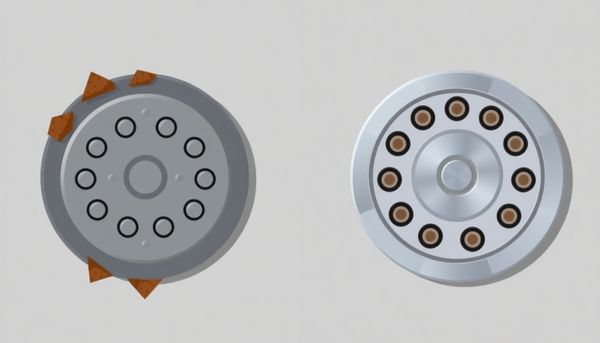
Hot tub scale is not just a minor inconvenience, but a stubborn antagonist that can make your spa time less than relaxing. To tackle this issue head-on, draining and scrubbing your hot tub thoroughly is essential. The process begins with emptying the tub completely. This might seem like a chore, but it's a necessary step to expose all areas affected by scale. Trust me, the effort is worthwhile when you consider the long-term benefits for your equipment.
Once the water is out, it’s time to get scrubbing. Use a non-abrasive scrub brush paired with a strong hot tub scale remover. These products are specifically formulated to dissolve mineral deposits without harming the surface of your spa. Remember to pay special attention to nooks and crevices where scale loves to hide. It might be a bit of a workout, but think of it as a small price to pay for a pristine spa experience.
For those stubborn spots, you might need to call in reinforcements — a line flush product can work wonders here. This will ensure any unseen buildup in the plumbing is dealt with, preventing future clogs. Once satisfied with the results, rinse everything thoroughly. This last step is crucial to remove any cleaner residues that could interfere with your next soak. When you refill your hot tub, you’ll be rewarded with clear, welcoming water, ready for your next dip.
Confronting the stubborn enemy of hot tub scale can feel daunting, but it doesn't have to be. Scale removal begins with understanding the extent of the problem. If the scale clings merely as a superficial nuisance along the waterline, a gentle touch with a specialized scale remover might suffice. It's like tackling a familiar kitchen stain: a bit of patience and the right cleaner can work wonders. But mind the water—nobody wants to soak in a chemical stew.
For scale that digs its heels deeper beneath the waterline, more drastic measures come into play. Draining the hot tub provides a clear battlefield, allowing for unrestricted cleaning without the worry of contaminating your soak zone. As the water drains, envision this as an opportunity to rejuvenate your spa. A thorough scrub with a suitable cleaner, focusing both on visible surfaces and hidden nooks, ensures no sneaky deposits escape your attention.
After the scrub-down, don't forget the unseen culprits lurking in the plumbing. A line flush product can effectively evict any buildup clinging to the pipes, ensuring smooth water flow once the hot tub is back in action. This proactive approach not only restores your hot tub’s pristine condition but also sets the stage for future prevention, keeping your spa an inviting sanctuary for relaxation.
Banish those pesky mineral deposits by understanding prevention, the secret weapon against hot tub scale. We all know maintenance can feel like a juggling act—balancing sanitizers, foaming issues, and heater checks—but tackling scale before it starts is your ticket to a hassle-free spa experience.
Start by monitoring your water chemistry. Consistent testing and adjusting alkalinity and pH levels are crucial. Aim for a pH between 7.4 and 7.6 and keep total alkalinity in the 80-120 ppm range. This not only prevents scale but also keeps your hot tub water feeling silky smooth. A friend of mine once skipped this step, thinking his spa was immune. Spoiler alert: it wasn't. He ended up spending a weekend scrubbing mineral deposits instead of relaxing.
If hard water is a constant companion, consider using a hose filter to reduce mineral content when filling your hot tub. Alternatively, add a water softener to your maintenance routine. Additionally, a reliable scale preventer is invaluable, acting as a shield against future buildup. These products bind to minerals before they settle on surfaces, making them an essential part of your arsenal.
Regular cleaning plays a vital role too. Wipe down surfaces above the waterline frequently, and schedule a full drain and scrub every quarter. This diligence not only deters scale but also keeps your hot tub inviting and pristine, ensuring those precious relaxation moments are uninterrupted by unwanted chores.
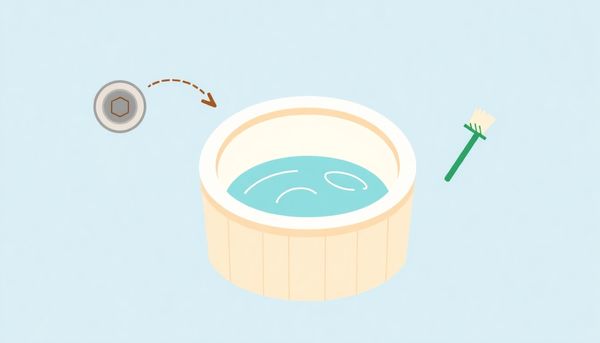
This article provided insights into maintaining your pool. Start your pool care journey today!
Want to become a pool maintenance expert? Our free Pool School course covers everything you need to know about pool care. From basic maintenance to advanced troubleshooting, you'll learn how to:
Join over 10,000 pool owners who have already transformed their pool care routine. Get started with our free Pool School course today!